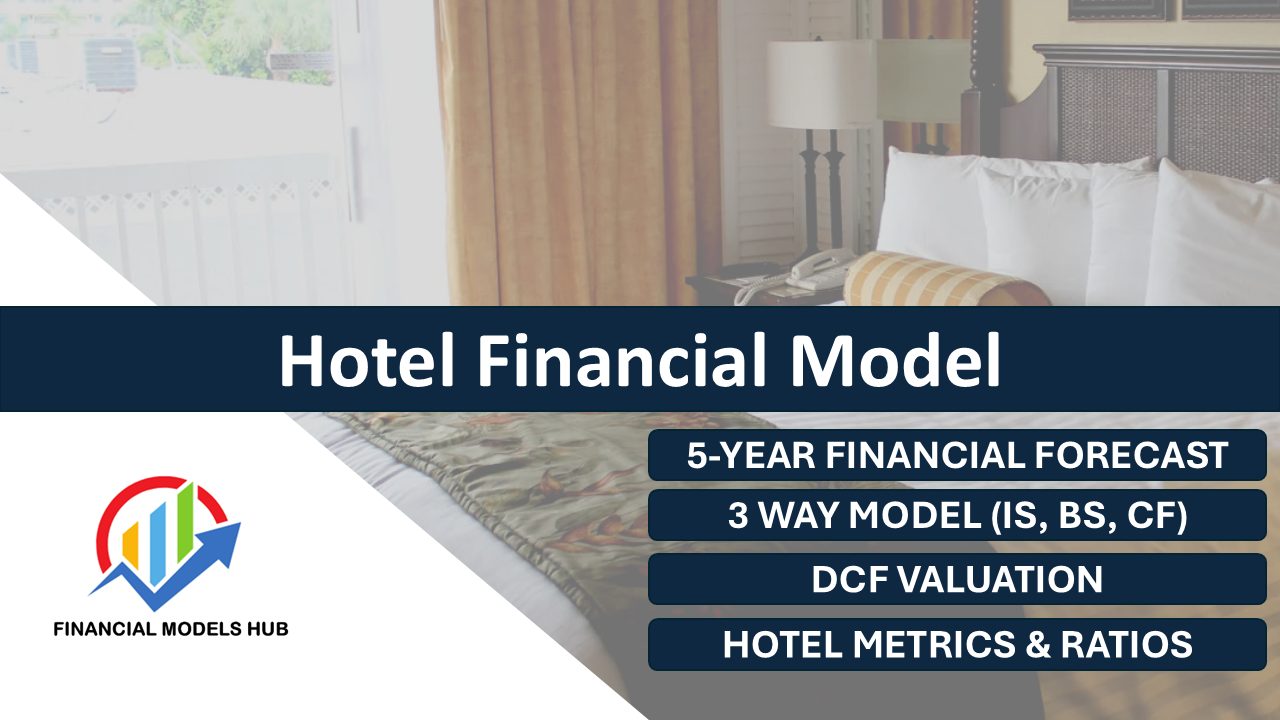Revenue per available room (RevPAR) stands as a crucial metric in the hospitality industry, offering insights into a hotel’s performance. It incorporates the average daily rate and the occupancy rate, providing a comprehensive view of how well a hotel is utilizing its room inventory. Let’s delve deeper into understanding RevPAR and its implications for hoteliers. We have also built a Hotel Financial Model Template for Founders and Entrepreneurs to use. Just input your assumptions, and our model does the rest! It’s a complete 3-way financial model with an Income Statement, Balance Sheet, Cash Flow Statement, hotel investment specific metrics, ratios, and more.

How to Calculate RevPAR
RevPAR Formula
The formula for calculating RevPAR is quite straightforward. It is the room revenue divided by the total available rooms. This calculation indicates how much revenue is being generated per available room, regardless of whether the room is occupied.

RevPAR Calculation Example
Consider a 150-room hotel generating $15,000 in room revenue over a certain period. The RevPAR would be calculated as follows:

This shows the revenue generated per available room is $100.
The Relationship Between ADR and RevPAR
Average Daily Rate (ADR) and RevPAR are interrelated metrics used extensively in the hotel industry. While ADR focuses on the average rate paid for rooms sold, RevPAR combines this with occupancy levels to provide a fuller picture of performance. Understanding how ADR impacts RevPAR can help in strategic pricing decisions. For further reading on this relationship, you can explore more about RevPAR calculations with SiteMinder.
How to Use RevPAR
RevPAR is essential in evaluating hotel performance over time. It provides an instant assessment of how effectively room pricing and occupancy strategies are performing. Hoteliers use RevPAR for decision-making, ensuring they are maximizing room revenue in comparison to the available inventory. More insights can be found in this STR article on RevPAR.
Improving RevPAR
Improving RevPAR involves strategies that focus on enhancing both the occupancy rate and the average daily rate. Adjusting pricing based on demand, offering bundled packages, and improving marketing efforts can lead to increased RevPAR. Ensuring you remain competitive and capitalize on high-demand periods are key strategies for enhancing performance as highlighted by Mews.
RevPAR and Hotel Profitability
RevPAR plays a significant role in understanding hotel profitability. It is a leading indicator used to assess potential profitability changes. Monitoring RevPAR alongside other metrics like the RevPAR index and percentage changes can offer a robust view of performance as discussed in the Happyhotel.io lexicon.
Frequently Asked Questions
What does a high RevPAR indicate?
A high RevPAR generally indicates that a hotel is performing well in terms of revenue generation from its available rooms.
How is RevPAR different from ADR?
While ADR focuses solely on the average price paid for rooms, RevPAR provides a broader view by incorporating occupancy rates into the revenue calculation.
Why is RevPAR important to hoteliers?
RevPAR allows hoteliers to gauge how effectively they are generating revenue per room, informing strategic decisions related to pricing, marketing, and operations.
Final Thoughts!
RevPAR is indispensable for understanding and improving the financial performance of hotels. By closely monitoring this metric and utilizing associated strategies, hotels can optimize their revenue performance. For further resources, visit the Investopedia guide on RevPAR.



